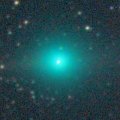
|
Getting higher rapidly in the morning sky. Now it is 6.8 mag (Jan. 23, Alexandre Amorim). It is expected to reach to 5 mag in February. It keeps observable in the excellent condition long time around the highlight until spring. Because it moves along the ecliptic plane, the anti-tail is clearly visible.
Date(TT) R.A. (2000) Decl. Delta r Elong. m1 Best Time(A, h)
Jan. 24 15 34.94 -18 25.1 1.190 1.230 68 6.9 3:31 (268, 37)
Jan. 31 15 17.40 -17 22.9 0.973 1.253 79 6.5 3:41 (257, 47)
|
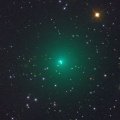
|
It has brightened much faster than expected. Now it is so bright as 8.4 mag (Jan. 16, Juan Jose Gonzalez). Very large and visible through binoculars. It keeps bright as 9 mag locating high in the evening sky, observable in good condition until February. Then it keeps observable for a long time until early summer.
Date(TT) R.A. (2000) Decl. Delta r Elong. m1 Best Time(A, h)
Jan. 24 4 5.86 15 54.2 0.681 1.439 118 8.9 20:51 (162, 37)
Jan. 31 4 21.41 16 11.6 0.712 1.440 115 9.0 20:44 (161, 37)
|

|
It was expected to reach up to 7 mag and to be observable in good condition in winter. However, this comet has not been observed since 1986. It was not detected, fainter than 20 mag on Dec. 1 (Takaaki Oribe). It seems much fainter than expected. The condition of this apparition is good. It keeps observable for a long time until early summer both in the Northern Hemisphere and Southern Hemisphere.
Date(TT) R.A. (2000) Decl. Delta r Elong. m1 Best Time(A, h)
Jan. 24 1 25.36 14 57.4 0.962 1.268 81 9.0 20:51 (124, 18)
Jan. 31 1 56.44 17 41.9 1.010 1.312 82 9.7 20:44 (128, 18)
|
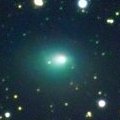
|
Brightening very rapidly, faster than expected. It is already so bright as 9.8 mag (Jan. 16, Juan Jose Gonzalez). It is expected to reach to 8 mag in 2009 summer. Because it moves in the northern sky, it keeps observable until it becomes brightest in the Northern Hemisphere.
Date(TT) R.A. (2000) Decl. Delta r Elong. m1 Best Time(A, h)
Jan. 24 22 10.00 39 44.7 3.822 3.501 63 9.9 20:51 (119,-31)
Jan. 31 22 13.94 38 27.7 3.876 3.472 58 9.9 20:44 (116,-34)
|

|
Now it is bright as 9.8 mag (Jan. 16, Juan Jose Gonzalez). It will be fading slowly after this. It keeps visible visually for a long time until May when it becomes low in the evening at 13 mag.
Date(TT) R.A. (2000) Decl. Delta r Elong. m1 Best Time(A, h)
Jan. 24 5 56.44 50 54.2 2.015 2.815 136 10.6 21:41 (180, 4)
Jan. 31 5 56.15 49 2.1 2.096 2.853 132 10.8 21:13 (180, 6)
|
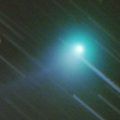
|
It reached to 6.3 mag in September in the southern sky (Sept. 4, Marco Goiato). Now it is still bright as 10.0 mag (Jan. 13, U. Pilz). It keeps observable in the northern sky while fading gradually. In the Southern Hemisphere, it will never be observable again.
Date(TT) R.A. (2000) Decl. Delta r Elong. m1 Best Time(A, h)
Jan. 24 19 36.91 32 20.3 2.529 2.088 52 10.7 3:31 (254,-39)
Jan. 31 19 50.96 35 28.1 2.579 2.170 54 10.9 3:41 (248,-36)
|
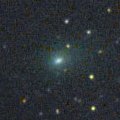
|
First return of a bright new periodic comet discovered by SOHO spacecraft in 2003. Now it was re-discovered by STEREO-B spacecraft. Appearing in the morning sky. Now it is bright as 11.2 mag (Jan. 16, Ken-ichi Kadota), but fainter than originally expected by 1 or 2 mag. It keeps observable in good condition while fading gradually after this.
Date(TT) R.A. (2000) Decl. Delta r Elong. m1 Best Time(A, h)
Jan. 24 16 14.45 -7 35.6 0.626 0.882 61 12.2 3:31 (263, 23)
Jan. 31 16 10.53 -6 6.6 0.667 0.983 70 13.0 3:41 (255, 30)
|
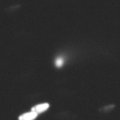
|
Already bright as 12.8 mag, and visible visually (Jan. 5, Marco Goiato). It is extremely low in the Northern Hemisphere now, but observable in good condition in the Southern Hemisphere. It is expected to brighten up to 10 mag from late 2009 to early 2010. Because the comet moves in the southern sky for a long time, it keeps impossible or very hard to observe in the Northern Hemisphere until 2009 September. But after 2009 October, it is observable at 10 mag for a while in good condition. In the Southern Hemisphere, it keeps observable for a long time while brightening until 2009 June when it brightens to 11 mag. But it becomes unobservable around and after the brightest time.
Date(TT) R.A. (2000) Decl. Delta r Elong. m1 Best Time(A, h)
Jan. 24 5 19.60 -49 31.2 3.286 3.588 99 12.4 21:03 ( 0, 76)
Jan. 31 5 16.52 -47 50.4 3.248 3.533 98 12.3 20:44 ( 8, 77)
|
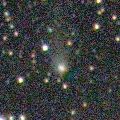
|
It brightened up to 11.5 mag in summer (Aug. 4, Marco Goiato). It keeps bright at 12 mag for a long time until 2009 spring. However, it is not observable in the Northern Hemisphere now. It will appear in the northern sky again in 2009 autumn, but it will be fainter than 15 mag and will keep locating very low after that. In the Southern Hemisphere, it keeps observable for a long time until it fades out.
Date(TT) R.A. (2000) Decl. Delta r Elong. m1 Best Time(A, h)
Jan. 24 19 49.47 -73 54.9 3.190 2.744 54 12.4 3:31 (345, 26)
Jan. 31 20 40.59 -75 10.7 3.162 2.765 57 12.4 3:41 (346, 26)
|

|
Now it is 14.7 mag, brightening as expected (Jan. 10, Ken-ichi Kadota). It will be bright at 9-10 mag for a long time from spring to autumn.
Date(TT) R.A. (2000) Decl. Delta r Elong. m1 Best Time(A, h)
Jan. 24 16 15.41 -17 10.7 2.285 1.969 59 13.3 3:31 (272, 28)
Jan. 31 16 32.83 -17 47.8 2.189 1.932 61 13.0 3:41 (270, 32)
|
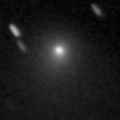
|
It reached to 10.9 mag in May (May 11, Marco Goiato). It is fading slowly. Now it is 13.7 mag (Jan. 9, Ken-ichi Kadota). It keeps bright as 12-14 mag for a long time after this until summer.
Date(TT) R.A. (2000) Decl. Delta r Elong. m1 Best Time(A, h)
Jan. 24 16 10.77 8 40.8 3.687 3.452 68 13.0 3:31 (249, 14)
Jan. 31 16 18.05 10 8.7 3.641 3.493 73 13.0 3:41 (243, 18)
|
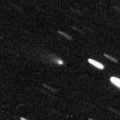
|
Now it is bright as 11.5 mag (Jan. 16, Juan Jose Gonzalez), already visible visually. It keeps 12-13 mag and observable in the evening sky for a long time until May.
Date(TT) R.A. (2000) Decl. Delta r Elong. m1 Best Time(A, h)
Jan. 24 23 48.33 -3 8.9 1.672 1.319 52 13.5 20:51 ( 94, 10)
Jan. 31 0 8.46 -0 21.4 1.670 1.294 50 13.3 20:44 ( 96, 9)
|
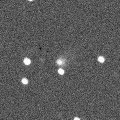
|
Now it is 13.3 mag, and visible visually (Jan. 16, Juan Jose Gonzalez). It locates near by Polaris until December, and observable all night. It will brighten gradually after this, and reach to 10-11 mag in June. In the Northern Hemisphere, it keeps observable in good condition until May when it becomes brightest. But it will never be observable again after that. In the Southern Hemisphere, it is not observable until April. But after that, it will be observable while fading gradually.
Date(TT) R.A. (2000) Decl. Delta r Elong. m1 Best Time(A, h)
Jan. 24 1 53.56 74 17.8 1.882 2.357 106 13.6 20:51 (167,-24)
Jan. 31 2 13.52 71 29.1 1.841 2.280 103 13.4 20:44 (165,-22)
|

|
New outburst occured in late December, and it still looks bright as 10.8 mag (Jan. 20, Osamu Miyazaki). In addition, the remnant of the major outburst in late September is still visible. Under the excellent condition, the huge faint coma expading up to 9 arcmin is also visible.
Date(TT) R.A. (2000) Decl. Delta r Elong. m1 Best Time(A, h)
Jan. 24 7 57.54 23 37.1 5.122 6.099 172 13.4 23:41 (180, 31)
Jan. 31 7 53.99 23 40.7 5.146 6.101 164 13.4 23:10 (180, 31)
|
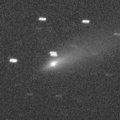
|
It reached up to 9.6 mag in summer (Aug. 2, Juan Jose Gonzalez). Now it is fading. It has already faded down to 13.6 mag (Jan. 9, Ken-ichi Kadota). It keeps observable and fading in the morning sky after this. It will be visible visually for some more time.
Date(TT) R.A. (2000) Decl. Delta r Elong. m1 Best Time(A, h)
Jan. 24 13 50.56 31 19.8 1.882 2.366 107 14.4 3:31 (208, 17)
Jan. 31 13 52.97 32 34.8 1.869 2.417 111 14.5 3:41 (200, 19)
|
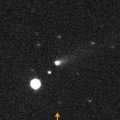
|
Now it is 14.3 mag (Jan. 8, Alan Hale), already visible visually. It was expected to be observable at 12-13 mag for a long time from January to July. But actually, it is much fainter. It seems to reach only up to 14 mag.
Date(TT) R.A. (2000) Decl. Delta r Elong. m1 Best Time(A, h)
Jan. 24 9 57.42 18 1.5 1.550 2.491 158 14.6 1:45 (180, 37)
Jan. 31 9 52.90 18 26.9 1.501 2.469 166 14.4 1:13 (180, 37)
|

|
It had been bright and visible visually around 13 mag from spring to autumn in 2008. It will be visible visually at 14 mag again until summer.
Date(TT) R.A. (2000) Decl. Delta r Elong. m1 Best Time(A, h)
Jan. 24 15 18.18 23 51.5 6.193 6.209 86 14.7 3:31 (229, 12)
Jan. 31 15 17.07 24 53.0 6.112 6.230 92 14.7 3:41 (221, 17)
|
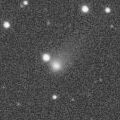
|
It brightened up to 12.7 mag in 2008 spring (Apr. 12, Marco Goiato). However, it has already faded down to 14.9 mag (July 22, Mitsunori Tsumura). It will never be observable again in the Northern Hemisphere.
Date(TT) R.A. (2000) Decl. Delta r Elong. m1 Best Time(A, h)
Jan. 24 17 50.40 -43 45.4 4.035 3.349 40 15.0 3:31 (309, 22)
Jan. 31 18 4.36 -44 21.1 4.011 3.380 44 15.0 3:41 (307, 26)
|
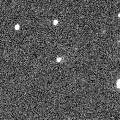
|
Now it is 15.6 mag (Jan. 10, Ken-ichi Kadota). It will brighten up to 12-13 mag in 2010 summer. It reaches to 14.5 mag in 2009 spring, and keeps observable in good condition until 2009 summer.
Date(TT) R.A. (2000) Decl. Delta r Elong. m1 Best Time(A, h)
Jan. 24 12 40.29 9 5.1 2.737 3.311 117 15.2 3:31 (199, 44)
Jan. 31 12 41.25 9 22.9 2.631 3.290 124 15.1 3:41 (187, 45)
|

|
Now it is 16.2 mag (Jan. 10, Ken-ichi Kadota). It will be observable at 15-16 mag in good condition until spring.
Date(TT) R.A. (2000) Decl. Delta r Elong. m1 Best Time(A, h)
Jan. 24 9 36.41 22 22.0 2.663 3.617 163 15.3 1:24 (180, 33)
Jan. 31 9 31.97 22 52.6 2.639 3.612 169 15.3 0:52 (180, 32)
|

|
Now it is 16.6 mag (Jan. 9, Ken-ichi Kadota). It will be observable at 15 mag in good condition in spring.
Date(TT) R.A. (2000) Decl. Delta r Elong. m1 Best Time(A, h)
Jan. 24 12 42.13 14 40.2 1.930 2.554 118 16.1 3:31 (198, 39)
Jan. 31 12 43.06 14 23.2 1.837 2.535 125 15.9 3:41 (187, 40)
|
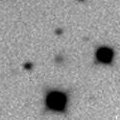
|
At the discovery in 2001, it became much brighter after the perihelion passage. In this apparition, although it was so faint as 20 mag in early September, it has already brightened rapidly up to 16.4 mag (Jan. 17, Catalina Sky Survey). It keeps observable in good condition for a while after this. But it will fade out rapidly after this, and will be fainter than 18 mag in April.
Date(TT) R.A. (2000) Decl. Delta r Elong. m1 Best Time(A, h)
Jan. 24 8 28.82 22 32.1 0.995 1.978 176 16.0 0:17 (180, 33)
Jan. 31 8 24.68 23 23.5 1.012 1.991 170 16.0 23:41 (180, 32)
|

|
Now it is 16.2 mag (Jan. 3, Ken-ichi Kadota). It should have reached up to 14.5 mag in summer in the southern sky, but it is already fading. In the Southern Hemisphere, it keeps observable for a long time after this. It is finally appearing in the morning sky also in the Northern Hemisphere soon. It keeps observable while the comet will be fading slowly after this.
Date(TT) R.A. (2000) Decl. Delta r Elong. m1 Best Time(A, h)
Jan. 24 12 18.20 -25 29.3 3.065 3.495 107 16.0 3:31 (220, 78)
Jan. 31 12 15.03 -24 21.7 3.004 3.544 115 16.0 3:35 (180, 79)
|
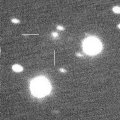
|
Now it is 16.4 mag (Jan. 1, Ken-ichi Kadota). It will be getting fainter and lower in the evening sky. It becomes unobservable in May.
Date(TT) R.A. (2000) Decl. Delta r Elong. m1 Best Time(A, h)
Jan. 24 2 26.14 25 5.0 2.029 2.378 98 16.1 20:51 (142, 19)
Jan. 31 2 35.08 25 10.3 2.104 2.372 93 16.1 20:44 (140, 17)
|
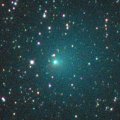
|
It reached up to 8.5 mag in September (Sept. 24, Juan Jose Gonzalez). Diffuse object expanding a large coma. It is already fading very rapidly. It was bright and visible visually at about 12.2 mag still on Dec. 21 (Marco Goiato). However, it has already faded down to 16.1 mag (Jan. 12, Y. Sugiyama). It will be fainter than 18 mag in February.
Date(TT) R.A. (2000) Decl. Delta r Elong. m1 Best Time(A, h)
Jan. 24 1 40.59 -10 22.7 2.197 2.182 76 16.3 20:51 (105, 37)
Jan. 31 1 51.79 -8 36.1 2.318 2.232 72 16.9 20:44 (105, 34)
|
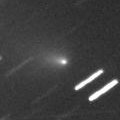
|
It had been lost for 112 years sincd 1896, but re-discovered by Koichi Itagaki and Hiroshi Kaneda on Sept. 10. It should be bright temporarily in outburst now. However, it became somewhat brighter in November than October. It still keeps bright as 14.4 mag (Jan. 2, Ken-ichi Kadota). It will be getting lower in the evening sky after this, and will be unobservable in April.
Date(TT) R.A. (2000) Decl. Delta r Elong. m1 Best Time(A, h)
Jan. 24 1 19.16 -3 15.5 2.092 2.040 73 16.8 20:51 (108, 29)
Jan. 31 1 32.66 -1 59.2 2.204 2.083 69 17.1 20:44 (108, 27)
|
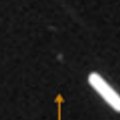
|
Now it is 17.1 mag (Jan. 17, J. F. Hernandez). It will brighten rapidly and will be observable at 16 mag in March and April. It moves southwards very fast after early April, and will be unobservable very soon in the Northern Hemisphere.
Date(TT) R.A. (2000) Decl. Delta r Elong. m1 Best Time(A, h)
Jan. 24 11 21.22 55 5.3 0.605 1.456 131 17.0 3:08 (180, 0)
Jan. 31 11 44.58 59 37.2 0.547 1.390 127 16.8 3:03 (180, -4)
|
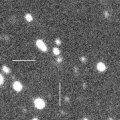
|
Now it is 16.1 mag (Dec. 23, Ken-ichi Kadota). It will be fading slowly after this, and will be fainter than 18 mag in March.
Date(TT) R.A. (2000) Decl. Delta r Elong. m1 Best Time(A, h)
Jan. 24 23 6.10 31 23.8 2.281 2.044 63 16.9 20:51 (117,-17)
Jan. 31 23 28.12 32 4.2 2.351 2.075 61 17.0 20:44 (118,-17)
|
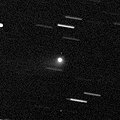
|
It reached up to 14 mag from September to November, and became visible visually. But it is already fading. It has faded down to 16.1 mag (Jan. 1, Ken-ichi Kadota). It is getting lower in the evening sky, and will be unobservable in February.
Date(TT) R.A. (2000) Decl. Delta r Elong. m1 Best Time(A, h)
Jan. 24 23 46.29 11 27.6 4.110 3.689 58 16.9 20:51 (105, 1)
Jan. 31 23 46.13 11 28.9 4.252 3.717 51 17.0 20:44 (102, -3)
|

|
It keeps observable at 17.5 mag until spring. But it locates low in the Northern Hemispere.
Date(TT) R.A. (2000) Decl. Delta r Elong. m1 Best Time(A, h)
Jan. 24 8 38.88 -24 10.1 3.669 4.435 136 17.3 0:27 (180, 79)
Jan. 31 8 34.41 -24 28.8 3.656 4.435 137 17.3 23:50 (180, 80)
|
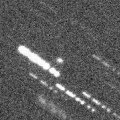
|
It was observed at 17.5 mag from summer to autumn in 2008. It will be observable again at 17 mag in 2009 spring.
Date(TT) R.A. (2000) Decl. Delta r Elong. m1 Best Time(A, h)
Jan. 24 17 37.89 23 2.7 3.358 2.969 58 17.4 3:31 (250,-12)
Jan. 31 17 37.51 23 38.7 3.287 2.976 63 17.3 3:41 (244, -5)
|
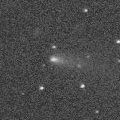
|
It reached up to 13.7 mag and became visible visually (Nov. 6, Juan Jose Gonzalez). However, it is already fading. It has faded down to 16.0 mag (Dec. 20, Ken-ichi Kadota). It will be fainter than 18 mag in February.
Date(TT) R.A. (2000) Decl. Delta r Elong. m1 Best Time(A, h)
Jan. 24 3 21.82 10 40.8 1.878 2.358 106 17.3 20:51 (147, 38)
Jan. 31 3 28.40 11 26.8 1.981 2.381 101 17.5 20:44 (143, 36)
|

|
Peculiar asteroid moving along a cometary orbit. It will be observable around 17 mag in good condition for a long time until May. It will fade out very rapidly after May.
Date(TT) R.A. (2000) Decl. Delta r Elong. m1 Best Time(A, h)
Jan. 24 14 12.58 -2 55.4 1.354 1.702 92 17.4 3:31 (235, 43)
Jan. 31 14 21.92 -3 30.1 1.326 1.741 96 17.3 3:41 (228, 48)
|
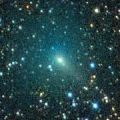
|
Diffuse comet, but it brightened up to 9.8 mag on July 7 (Juan Jose Gonzalez). Now it is fading. It was still visible visually at 14.8 mag on Dec. 20 (Jose Carvajal). In the Northern Hemisphere, it keeps observable until spring when the comet becomes faint. In the Southern Hemisphere, it will never be observable again.
Date(TT) R.A. (2000) Decl. Delta r Elong. m1 Best Time(A, h)
Jan. 24 2 52.23 51 25.3 2.472 2.945 109 17.5 20:51 (160, -1)
Jan. 31 3 1.19 49 4.4 2.611 3.008 104 17.8 20:44 (157, 0)
|
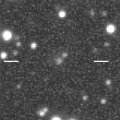
|
Now it is 17.4 mag (Dec. 14, Ken-ichi Kadota). It keeps observable in good condition at 17.5-18 mag until March.
Date(TT) R.A. (2000) Decl. Delta r Elong. m1 Best Time(A, h)
Jan. 24 4 51.62 10 13.0 1.726 2.455 127 17.6 20:51 (175, 45)
Jan. 31 4 51.65 11 30.6 1.783 2.443 121 17.6 20:44 (168, 43)
|
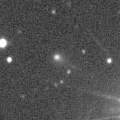
|
It was observed as bright as 14-15 mag in 2007 autumn. Now it is 18.1 mag (Nov. 21, Ken-ichi Kadota). It keeps observable in good condition for a while. It will be fainter than 18 mag in Feburary.
Date(TT) R.A. (2000) Decl. Delta r Elong. m1 Best Time(A, h)
Jan. 24 7 48.76 34 10.9 2.659 3.612 163 17.6 23:32 (180, 21)
Jan. 31 7 43.11 34 7.3 2.711 3.638 156 17.7 22:59 (180, 21)
|

|
A tiny comet discovered by the STEREO spacecraft. It passed only 0.13 A.U. from the sun on Jan. 11. It will appear in the southern morning sky while fading very rapidly.
Date(TT) R.A. (2000) Decl. Delta r Elong. m1 Best Time(A, h)
Jan. 24 18 43.69 -38 50.4 0.922 0.488 29 17.7 3:31 (310, 11)
Jan. 31 18 44.65 -47 35.8 1.009 0.685 40 19.4 3:41 (314, 22)
|

|
It will be observable at 18 mag in good condition in February.
Date(TT) R.A. (2000) Decl. Delta r Elong. m1 Best Time(A, h)
Jan. 24 10 11.76 16 26.3 0.694 1.638 154 17.9 1:59 (180, 39)
Jan. 31 10 9.86 15 27.7 0.676 1.641 161 17.8 1:30 (180, 40)
|

|
Now it should be brightest. But it has not been recovered yet. It was observed only around the perihelion at the discovery in 1999. If it was bright temporarily in outburst, it can be much fainter than this ephemeris in this apparition. Josef Mueller reported it was 19.2 mag on Dec. 16, 2007, but it was not confirmed. It was not detected, fainter than 19.2 mag on Dec. 20 (James R. Schofer) and fainter than 20.5 mag on Jan. 15 (Leonid Elenin).
Date(TT) R.A. (2000) Decl. Delta r Elong. m1 Best Time(A, h)
Jan. 24 6 3.39 24 4.2 2.451 3.319 146 17.9 21:47 (180, 31)
Jan. 31 6 0.73 23 54.7 2.515 3.322 139 17.9 21:17 (180, 31)
|
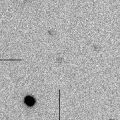
|
It was observed at 18 mag from autumn to winter in 2007. It will be observable again at 18 mag from winter to spring in 2009.
Date(TT) R.A. (2000) Decl. Delta r Elong. m1 Best Time(A, h)
Jan. 24 10 42.11 -6 0.9 4.835 5.605 137 17.9 2:29 (180, 61)
Jan. 31 10 39.95 -6 9.9 4.776 5.610 144 17.9 2:00 (180, 61)
|

|
Great outburst occured in 2007 October, and it bacame a naked eye comet of 2 mag. It kept so bright as 5.5 mag still in 2008 spring (Apr. 30, Carlos Labordena), but it was extremely faint and difficult to see. The size was so large, the diameter was larger than 60 arcmin. It will become observable in good condition in this autumn and winter again. The extremely faint large diffuse glow may be detected with a best sky condition, around 5-6 mag with a diameter of 1 or 2 degrees. Mitsunori Tsumura detected a possible glow of Comet Holmes on Nov. 4. Current brightness of the central core is 17.8 mag (Oct. 31, Ken-ichi Kadota), much brighter than pre-outburst brightness still now.
Date(TT) R.A. (2000) Decl. Delta r Elong. m1 Best Time(A, h)
Jan. 24 8 51.47 26 41.6 3.258 4.232 170 18.6 0:39 (180, 28)
Jan. 31 8 45.40 26 47.3 3.279 4.254 170 18.7 0:06 (180, 28)
|
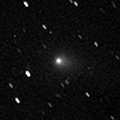
|
It passed near by earth in October. It brightened more rapidly than expected, and it reached up to about 13.7 mag in November and became visible visually (Nov. 24, Marco Goiato). It will fade out rapidly after this. However, it was still visible as 17.5 mag on Jan. 19 (Y. Sugiyama).
Date(TT) R.A. (2000) Decl. Delta r Elong. m1 Best Time(A, h)
Jan. 24 4 4.27 23 21.6 1.014 1.727 119 19.6 20:51 (164, 30)
Jan. 31 4 16.27 23 55.6 1.108 1.769 115 20.2 20:44 (162, 29)
|
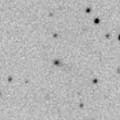
|
It was observed bright at 16.5-17 mag from late 2006 to early 2007. However, it is fading after that, although it is getting closer to the sun. It was so faint as 19.4 mag around the perihelion passage in 2008 spring (Mar. 10, Mitsunori Tsumura). This comet was observed so faint around the perihelion passage in the previous apparition at the discovery. It faded out before the perihelion passage again in this apparition.
Date(TT) R.A. (2000) Decl. Delta r Elong. m1 Best Time(A, h)
Jan. 24 11 53.73 19 35.9 3.636 4.346 131 21.6 3:31 (183, 35)
Jan. 31 11 52.90 20 13.5 3.573 4.353 137 21.6 3:12 (180, 35)
|
|
![]()
 C/2006 W3 ( Christensen )
C/2006 W3 ( Christensen ) C/2006 OF2 ( Broughton )
C/2006 OF2 ( Broughton ) C/2008 A1 ( McNaught )
C/2008 A1 ( McNaught ) 210P/2008 X4 ( Christensen )
210P/2008 X4 ( Christensen ) C/2007 Q3 ( Siding Spring )
C/2007 Q3 ( Siding Spring ) C/2007 G1 ( LINEAR )
C/2007 G1 ( LINEAR ) 22P/Kopff
22P/Kopff C/2006 Q1 ( McNaught )
C/2006 Q1 ( McNaught ) 67P/Churyumov-Gerasimenko
67P/Churyumov-Gerasimenko C/2008 T2 ( Cardinal )
C/2008 T2 ( Cardinal ) 29P/Schwassmann-Wachmann 1
29P/Schwassmann-Wachmann 1 19P/Borrelly
19P/Borrelly 116P/Wild 4
116P/Wild 4 C/2005 L3 ( McNaught )
C/2005 L3 ( McNaught ) C/2007 B2 ( Skiff )
C/2007 B2 ( Skiff ) 65P/Gunn
65P/Gunn 74P/Smirnova-Chernykh
74P/Smirnova-Chernykh 77P/Longmore
77P/Longmore 204P/2008 R5 ( LINEAR-NEAT )
204P/2008 R5 ( LINEAR-NEAT ) C/2006 U6 ( Spacewatch )
C/2006 U6 ( Spacewatch ) 59P/Kearns-Kwee
59P/Kearns-Kwee 6P/d'Arrest
6P/d'Arrest 205P/2008 R6 ( Giacobini )
205P/2008 R6 ( Giacobini ) 209P/2008 X2 ( LINEAR )
209P/2008 X2 ( LINEAR ) C/2008 R3 ( LINEAR )
C/2008 R3 ( LINEAR ) C/2007 U1 ( LINEAR )
C/2007 U1 ( LINEAR ) P/2008 Y3 ( McNaught )
P/2008 Y3 ( McNaught ) C/2008 Q1 ( Maticic )
C/2008 Q1 ( Maticic ) 61P/Shajn-Schaldach
61P/Shajn-Schaldach 2001 TX16
2001 TX16 C/2008 J1 ( Boattini )
C/2008 J1 ( Boattini ) 211P/2008 X1 ( Hill )
211P/2008 X1 ( Hill ) 188P/2007 J7 ( LINEAR-Mueller )
188P/2007 J7 ( LINEAR-Mueller ) C/2009 A1 ( STEREO )
C/2009 A1 ( STEREO ) P/2008 Y2 ( Gibbs )
P/2008 Y2 ( Gibbs ) P/1999 XN120 ( Catalina )
P/1999 XN120 ( Catalina ) C/2007 S2 ( Lemmon )
C/2007 S2 ( Lemmon ) 17P/Holmes
17P/Holmes P/2008 Q2 ( Ory )
P/2008 Q2 ( Ory ) 173P/2005 T1 ( Mueller 5 )
173P/2005 T1 ( Mueller 5 )![]()


































